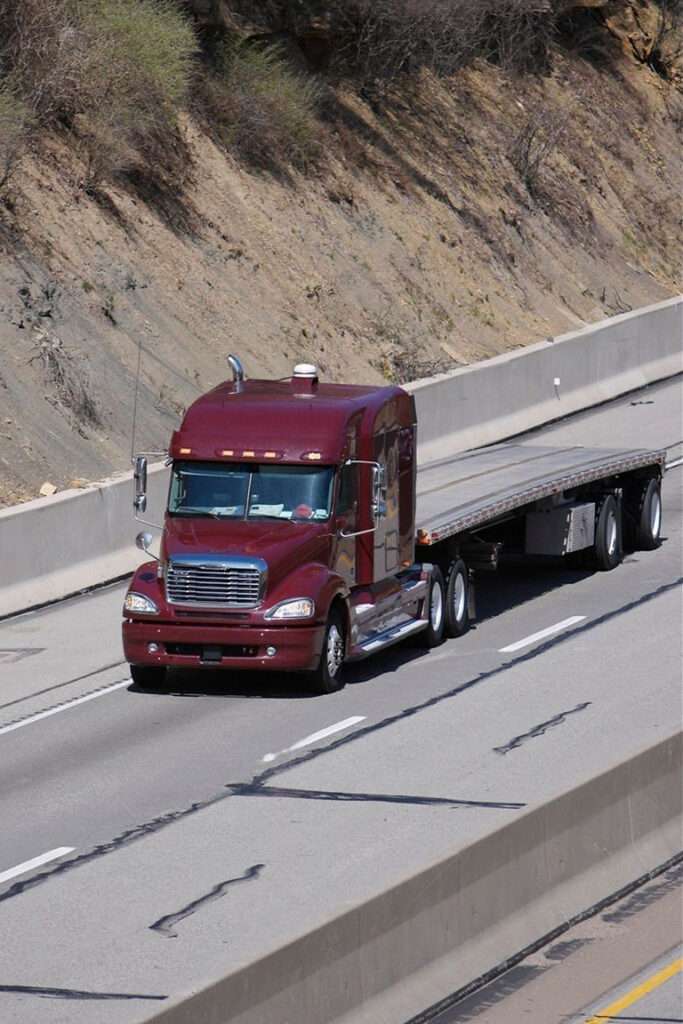Contact us
-
384 Northyards Blvd NW Bldg.
100 Suite 190, Atlanta GA 30313 - [email protected]
- Mon - Fri 9 AM to 5 PM EST
Logistics play a very critical role in the success of your food business. Whether moving supplies to your manufacturing facilities or sending your products to the next step in your supply chain, you require food-safe transportation services.
However, not all trailers may offer viable options for more big freight. In this instance, flatbed transportation services are your best bet.
Here is everything you will need to know about flatbed trucking that could help your business’s logistics.

Flatbed trucking, as the name implies, is a flat hauler. Cargo is transported on a wooden platform supported by a strong metal frame. The flatbeds are open to the elements, with no walls, roofs, or doors.
Flatbed truck trailers are 48-53 feet long, 8 feet 6 inches wide, and have a 5-foot deck height. Drop decks are used on flatbed trucks to accommodate cargo that exceeds maximum heights. Step Deck trucks are the name given to these types of transporters. Flatbed trucks can haul up to 48,000 pounds of freight.
Flatbed trucks are adaptable and suitable for a wide range of logistics tasks. Multiple trailers can be connected to transport heavy cargo in some country areas.
Long pipes, highway barriers, logs, steel coils, mobile homes, baled tires, equipment, shipping containers, and other items are routinely transported on flatbed trucks. Flatbed trucks bring goods to places, including industries, farms, warehouses, construction sites, and more.
Flatbed trucks are well-known for their adaptability. They can transport various types of cargo with little effort. Flatbed truck trailers can transport bigger and heavier things due to their design.
Flatbed trucks can also transport the following items:
● CDL Class A
● 2 years of flatbed truck driving experience (or comparable vehicle)
● A perfect driving record
● Passing a DOT physical and drug test
● Capability to lift and secure hefty objects
● Understanding of federal, state, and local regulations
● 4 years of flatbed truck driving experience (or comparable vehicle)
● Knowledge of tarping and strapping loads
● Hazmat certification
● Experience with a winch
Salaries for flatbed truck drivers vary depending on their level of expertise, company size, and geographic region.
● Annual Median Salary: $62,500 ($30.05/hour)
● Annual Salary in the Top 10%: $112,000 ($53.85/hour)
Flatbed truck driver employment is predicted to rise moderately over the next decade.
● Drivers of flatbed trucks earn more than dry vans or refrigerator truck drivers. The average national flatbed truck fare is $3.07 per mile, compared to $2.27 per mile for dry vans and refrigerated trucks. This equates to an extra $15,000 yearly for flatbed trucking over other types of equipment.
● Flatbed trucking is in high demand, and many sectors rely on this mode of transportation. This need may imply long-term job security.
● Flatbed trucking requires less waiting time than other modes of transportation. Flatbed trucking routes typically have only one delivery destination, and flatbed trucks are not required to back up to docks.
● Flatbed vehicles have fewer maintenance requirements than other types of trucks. Cleaning is straightforward, thanks to the open deck.
● Flatbed truck driving demands careful driving and hauling skills to meet tight safety standards.
● Manipulation and securing loads can be physically hard and sometimes dangerous.
Flatbed transportation is the ideal solution for those who need to transport large quantities and items that do not typically fit standard trucking solutions. Flatbed transportation is an option for those with oversized freight or cargo that cannot or will not fit into standard-sized trailers. Choosing this choice can benefit a variety of firms in terms of operations and delivering resources or products where they need to go.

Copyright@2021 – All rights reserved
Designed and Developed by MetroMax Solutions